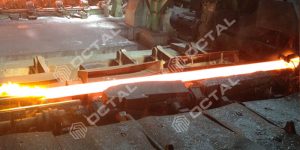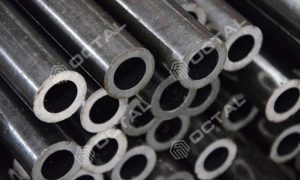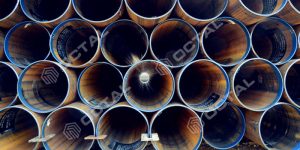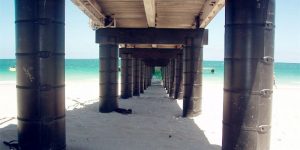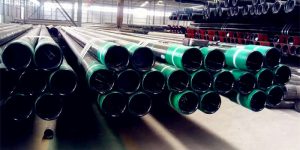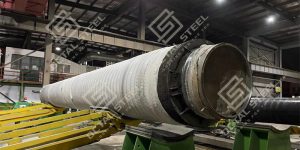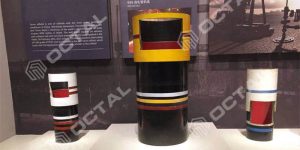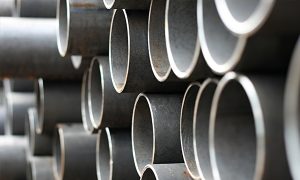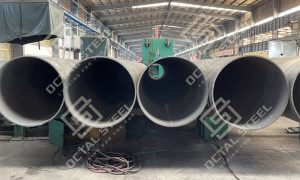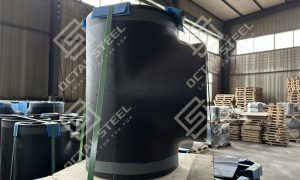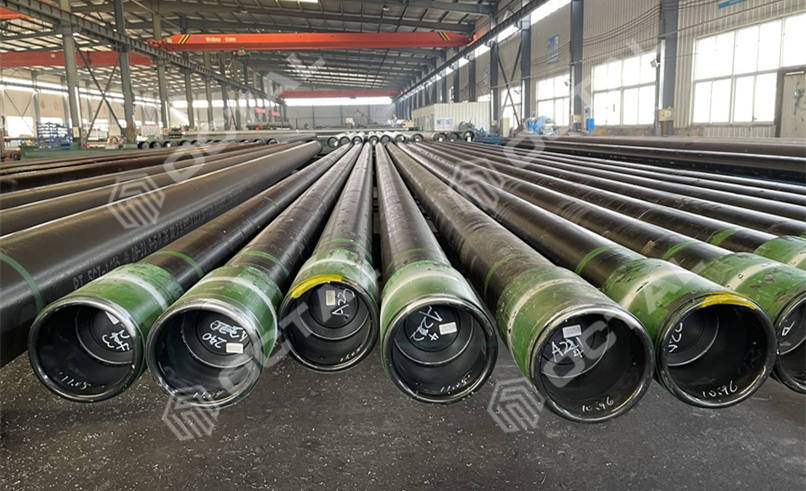API 5CT J55/K55 Casing and Tubing Pipe
Standards: API SPEC 5CT
Grades: J55, K55, N80, L80, P110, T95
PSL level: PSL1, PSL2, PSL3
Stock Available: Yes
Manufacturing process: Seamless, ERW
P110 Casing and Tubing Outer Diameter: 2-3/8”, 2-7/8”, 3-1/2”, 4-1/2”, 5-1/2”, 6-5/8”, 7”, 7-5/8”, 7-3/4”, 8-5/8”, 9-5/8”, 10-3/4”, 11-3/4”, 13-3/8”, 16”, 18-5/8”, 20”
Thickness: 4 LB/FT to 106.59 LB/FT, 0.244” to 0.875”
Coupling thread: BTC, Buttress (Regular, Special bevel or special clearance), LTC, STC, premium connections threads.
Length: R1, R2, R3, customized
API 5CT J55 and K55 casing and tubing are relatively low grade material pipe among all API 5CT pipes, they have same chemical composition and same yield strength 379-552 Mpa but in different tensile, J55 tensile strength minimum 517 Mpa which K55 is 655 Mpa. J55/K55 are lower grade than N80, L80, P110 or T95, so they are a cheaper option material and widely used in non corrosive oil well installation without high strength requirement.
J55/K55 identification API color code
J55 Tubing: One bright green band, coupling bright green and no bands.
J55 Casing: One bright green band, coupling bright green and with one white band.
K55 Casing and Tubing: two bright green, coupling bright green and no bands.
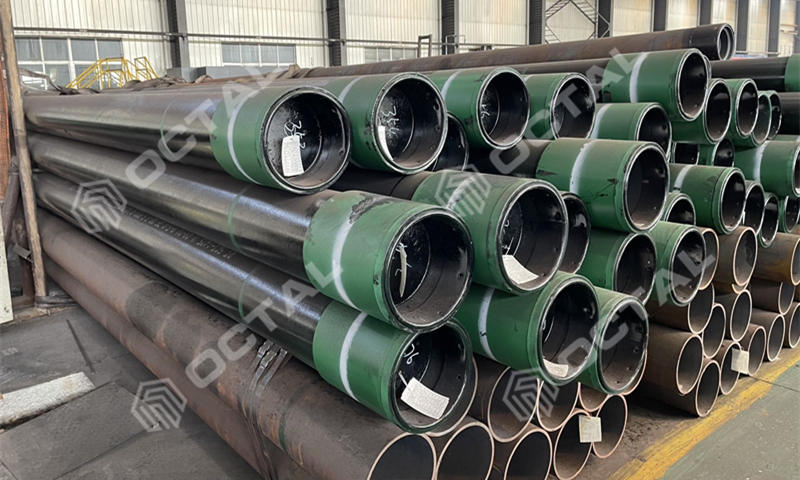
API 5CT J55 Casing Pipe
API 5CT Specification
API 5CT defines delivery conditions for steel casing and tubing pipes used for oil wells installation, it covers pup joints, coupling stock, coupling material, and accessory materials, and establishes requirements for three product specification levels (PSL-1, PSL-2, and PSL-3). The requirements for PSL-1 are the basis of this standard.
4 Groups of Grade
In API 5CT there are 4 groups and J55/K55 in group 1.
• Group 1: All casing and tubing in Grades with H, J, K, N and R
• Group 2: All casing and tubing in Grades with C, L, M and T
• Group 3: All casing and tubing in Grade P
• Group 4: All casing in Grade Q
Connections
API 5CT is applicable to following connections which complied with API SPEC 5B:
• SC: Short round thread casing
• LC: Long round thread casing
• BC: Buttress thread casing
• NU: Non-upset tubing
• EU: External upset tubing
• IJ: Integral tubing connections
• Premium connections
Reference Inspection for J55/K55
Visual inspection for pipe surface
Dimension check
Mechanical test on tensile strength, yield strength and elongation
Chemical analysis
NDT test including Magnetic particle, Ultrasonic Test, Hydrostatic Test
Charpy impact test
Flattening tests
Hardness test
Drift test
Thread ends check with thread gauge and coupling check
J55 VS K55 (PSL1 and PSL2)
J55 and K55 are similar material in chemical composition and mechanical properties, especially J55 has lower minimum tensile requirement and lower elongation, others specifications are same like heat treatment methods, NDE test, Charpy Impact test, hydrostatic test.
J55/K55 minimum yield strength: 379-552 Mpa;
J55 minimum tensile strength: 517 Mpa, elongation ≥ 19%;
K55 minimum tensile strength: 655 Mpa, elongation ≥ 15%.
API 5CT J55/K55 casing and tubing manufacturing types
J55/K55 pipes could be made in seamless or welded EW. In most cases the pipes made in seamless.
Heat treatment methods for J55/K55 Pipes
PSL1: J55 and K55 are the same (delivery condition hot rolled without heat treatment);
PSL2: J55, K55 casing and tubing should be the full length normalized or normalized and tempered, if thickened, should be thickened after normalizing or normalizing and tempering.
Charpy Impact Test
Casing and tubing pipe body:
PSL1: No difference between J55 and K55;
PSL2: J55 and K55 require a horizontal minimum impact energy of 20 J for a full-size specimen and 27 J for a full-size specimen.
Couplings: The J55 and K55 impact tests must be performed with a minimum transverse impact energy of 20 J for size specimens and 27 J for full-size specimens in the longitudinal direction.
None Destructive Test
J55/K55 PSL1: No mandatory requirements for NDE test.
J55/K55 PSL2: All grades pipes shall be inspected for the detection of longitudinal imperfections on the outside and inside surfaces to accepted by level L4 using one or more of the following methods:
a) Ultrasonic testing in accordance with ISO 9303 or ASTM E213;
B) Flux leakage testing in acoordance with ISO 9402 or ASTM E570;
c) Eddy current concentric coil testing in accordance with ISO 9304 or ASTM E309;
d) For pipe outside surface, magnetic particle inspection in accordance with ISO 13665 or ASTM E709.
API 5CT J55/K55 Casing and Tubing Pipe Application:
As we know steel casing pipe is considered as a pipe pile that will stabilize the oil well. Casing is installed in oil well downhole to provide structural integrity to the wellbore and bear external-collapse pressure from rock formations and internal-yield pressure from fluid and gas. It needs to take pressure from its own weight and withstand the torque and transaxial pressure placed on it while running downhole.
Tubing Application:
Tubing placed inside the casing used to transport crude oil or natural gas from the source rock to the ground wellhead. Inside tubing is sucker rods, which used for pumping oil and gas.
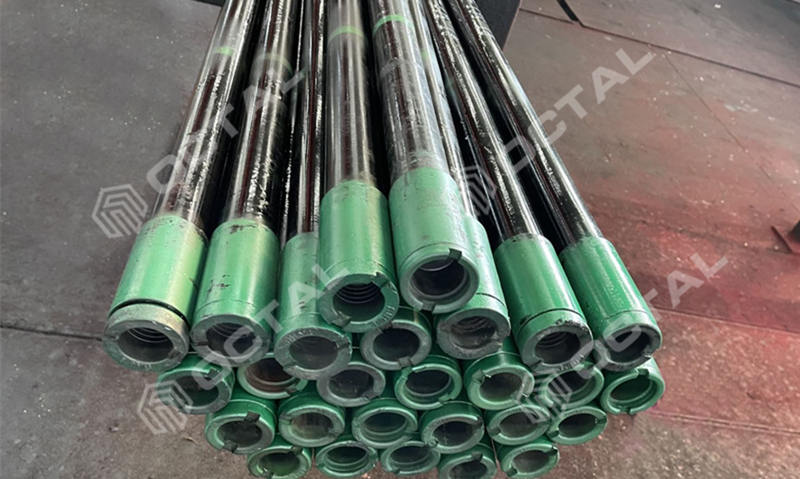
API 5CT J55 Tubing pipe
Chemical Composition
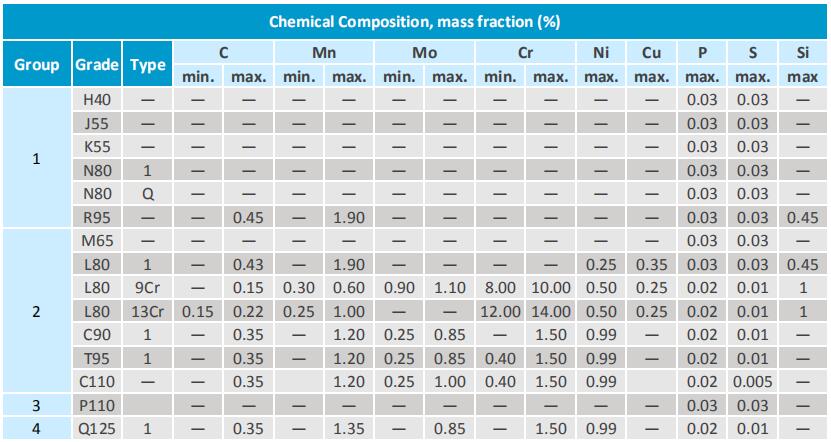
Mechanical Properties
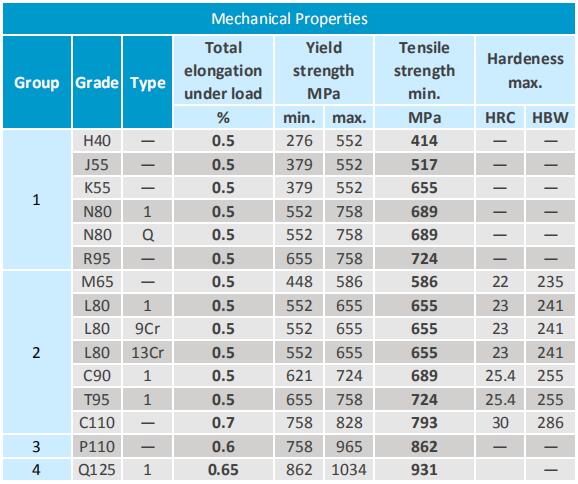
Dimension and tolerances
Length Range:
R1: 4.88 to 7.62 meters, permissible variation max 1.83 meters, and permissible length min 5.49 meters.
R2: 7.62 to 10.36 meters.
R3: 10.36 to 14.63 meters.
Outer diameter tolerance:
For pipes below 4-1/2 inch, tolerances +/- 0.79mm or 0.031 inch
For pipes equal and above 4-1/2 inch, tolerances +1% and -0.5% of pipe diameter
Wall thickness tolerance – 12.5%.
Imperfections:
For J55/K55 pipes, maximum permissible depth of linear imperfections, external and internal imperfections 12.5 of wall thickness. (Other grades H40, M65, N80 Type 1, N80Q, L80, R95, P110 adopts same terms)
Octal supply range for P110 casing and tubing
Standards: API SPEC 5CT
Grades: J55, K55, N80, L80, P110, T95
PSL level: PSL1, PSL2, PSL3
Stock Available: Yes
Manufacturing process: Seamless, ERW
P110 Casing and Tubing Outer Diameter: 2-3/8”, 2-7/8”, 3-1/2”, 4-1/2”, 5-1/2”, 6-5/8”, 7”, 7-5/8”, 7-3/4”, 8-5/8”, 9-5/8”, 10-3/4”, 11-3/4”, 13-3/8”, 16”, 18-5/8”, 20”
Thickness: 4 LB/FT to 106.59 LB/FT, 0.244” to 0.875”
Coupling thread: BTC, Buttress (Regular, Special bevel or special clearance), LTC, STC, premium connections threads.
Length: R1, R2, R3, customized


